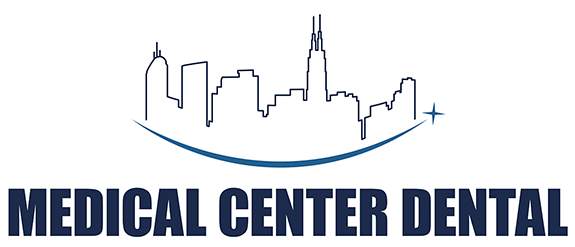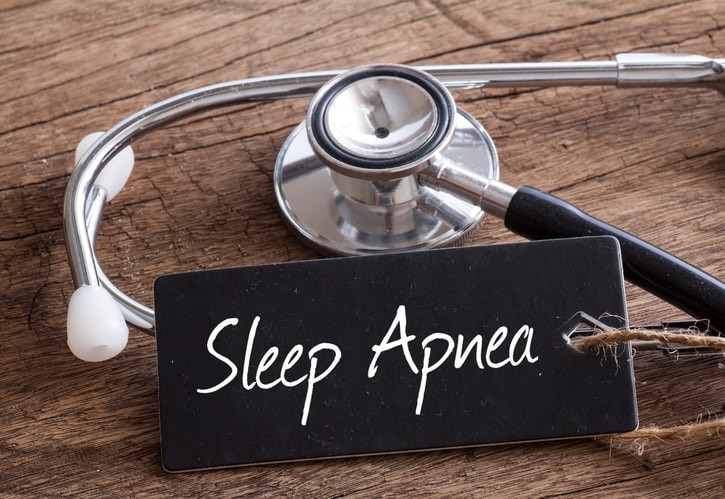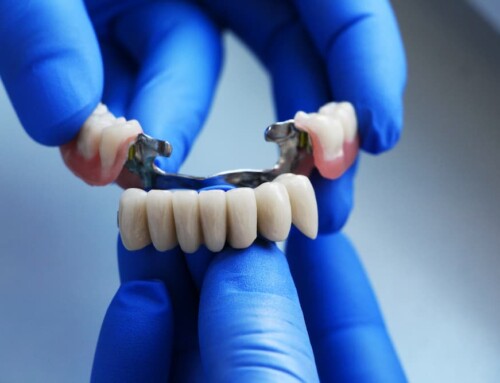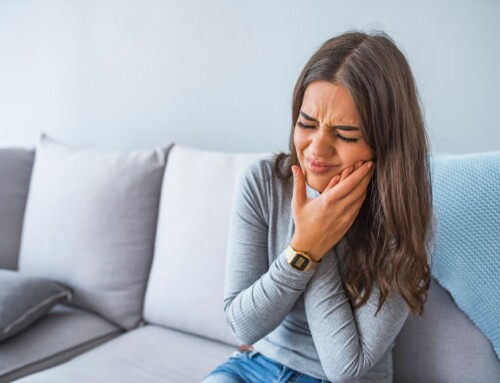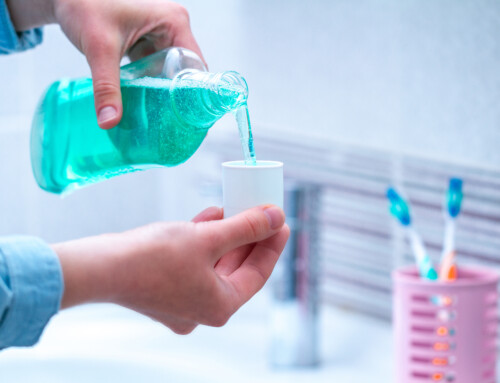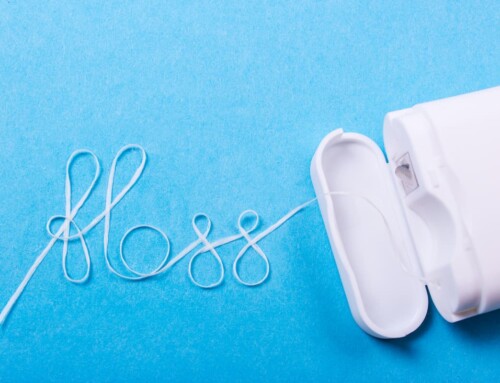Sleep apnea is a common disorder that’s believed to affect more than 18 million adults in the United States alone. Despite it being a fairly common diagnosis, sleep apnea is a serious disorder with side effects that can cause serious health issues or even death, which is why receiving a proper diagnosis and treatment of this disorder is an absolute must if you’ve been exhibiting the symptoms.
You have several treatment options to choose from, but sometimes the sheer number of potential approaches to the problem can be a bit overwhelming and leave you with more questions than answers.
- What are the most popular treatments?
- Is there a sleep apnea device that’s better than the rest?
- Which one is right for you?
Explore these options to get a better idea of how each treatment will affect your ability to get a good, safe night’s sleep and perhaps answer a few of these nagging questions.
What is The Vivos System?
The Vivos System is a non-invasive, non-surgical, non-pharmaceutical, multidisciplinary treatment modality for mild to moderate OSA that does not require lifetime care for most patients. The proprietary and virtually painless Vivos System enhances and increases the upper airway and offers patients what is believed to be the first truly effective non-surgical, non-invasive and potentially lasting solution is one of a few mild sleep apnea treatments that seek to keep you breathing easily through the night while remaining as unobtrusive as possible while in use.
This system is classified as an oral appliance, meaning it fits into the mouth much like a mouth guard worn by athletes and can be obtained by visiting a dentist that’s certified to offer this treatment.
Are There Other Oral Appliances?
While other oral appliances may not be as effective as Vivos, or provide permanent results, they are still an excellent option for those looking to handle mild to moderate sleep apnea problems without relying on a CPAP machine.
These appliances have been approved as a first-line treatment against sleep apnea by the American Academy of Sleep Medicine and provide you with an easier-to-care-for, quieter way to manage your nightly struggle.
They are worn in the mouth while sleeping and perform the important job of pulling the lower jaw forward, which in turn keeps the tongue and throat muscles up and away from your airways, allowing for smooth, continued breathing throughout the night.
It is important to note that while there are a number of over-the-counter oral appliances you can pick up from your local supermarket or drugstore, these are not meant or approved for the treatment of sleep apnea, and often do not meet FDA regulations. They are designed to prevent tooth-grinding for those with Bruxism.
Used unsupervised for an extended period of time, these OTC options can cause serious damage to jaw muscles and your tooth alignment. Therefore, if you are choosing a non-Vivos oral treatment method, it is still best to work with a dental professional that is trained in sleep medicine to get a custom-made mouthpiece that gets you the results you need without the dangerous, painful side effects.
What are the Different Nightly Worn Devices?
Positive airway pressure treatment is among the most common treatments for all forms of sleep apnea. These machines come in different forms, but each involves the use of a breathing mask, tube, and machine. The mask itself is worn over the mouth and/or nose during sleep and uses pressurized air to keep your airways open throughout the night. There are a handful of different types of positive airway pressure devices to choose from:
- CPAP (continuous positive airway pressure)
- BiPAP (bilevel positive airway pressure)
- VPAP (variable positive airway pressure)
While the use of PAP machines of all varieties tends to show positive results, they’re not without their downsides.
The results are not permanent, and the device will need to be worn every single night in order to keep breathing steady. The machines themselves also tend to be loud and can disrupt sleep for those around you throughout the night.
Even so, this is one of the best options from those suffering from moderate to severe sleep apnea, looking for a non-surgical way to handle the issue.
What is Upper Airway Stimulation?
In some cases, individuals with OSA may be unable to use a PAP machine, or repeated use of the PAP machine offers little or no results in breathing comfort. This is when the Inspire Upper Airway Stimulation (UAS) becomes a treatment option.
This method involves the implanting of three small components: two leads and a small generator. The generator itself keeps the whole system running.
The lower lead – the breathing sensor lead – trails downward and monitors your breathing at all times.
The upper lead – the stimulation lead – sends out small signals that manipulate the muscles around the airway to keep it open.
This is an excellent option for those unable to benefit from the use of various available PAP machines, but, like many other options, does not provide a permanent solution to OSA problems.
Should I Consult a Surgeon?
Surgery is not a common treatment for OSA in most adults. This is because locating the specific muscle or bit of tissue responsible for causing obstructive sleep apnea is difficult to identify with a general sleep study, and blockages may come from multiple sources around the airway, ranging from nasal problems to drooping soft tissue.
Surgical treatment of this sleep disorder has been reported to be successful approximately 50 percent of the time and requires a re-assessment after recovery.
Due to this, some surgeons offer a variety of options for a more direct, surgical treatment of OSA, including:
- Uvulopalatopharyngoplasty (UPPP)
- Nasal surgery
- Soft palate support implants
- Tongue base reduction
- Lower jaw advancement
The type of surgery you receive will depend on the root cause of your OSA, and it is common to need more than one procedure to adequately treat the issue and restore proper nighttime breathing. This method is only recommended for those who are unable to handle PAP machines or UAS treatment options available to them, as the outcome is often uncertain.
Does Sleep Apnea Affect Children?
Yes, children suffer from sleep apnea, too. While surgery is typically a last resort treatment for adults, many causes of childhood OSA are directly related to an abnormal structure around the airway.
Enlarged tonsils or adenoids are often to blame for the appearance of OSA in young individuals. Luckily, these can be quite simply removed by a surgeon. In 75 percent of cases, removal of these oversized pieces not only helped OSA symptoms in children but also cured them entirely.
Do Lifestyle Changes Help?
In some cases where minor to moderate OSA is involved, a few key lifestyle changes may be what is needed in order to keep airways open, particularly where diet and exercise are concerned. It’s estimated that approximately 70 percent of adults diagnosed with OSA are also classified as obese.
While the presence of obesity itself is not necessarily the cause of OSA in every individual, it is a factor that should be considered before pursuing surgical options. Losing weight while using a PAP machine or Vivos oral appliance can help you get the most out of your treatment. The relationship between obesity and OSA is rather complex, however, and you should always pursue your weight loss goals under the supervision of your medical doctor.
Another change that should be made even while in pursuit of other treatment methods is reducing your intake of alcohol and cigarettes. Both of these common substances can either cause or worsen OSA symptoms.
Alcohol relaxes the muscles in the throat, causing blockages in those who may not have experienced them before and worsening blockages in those already diagnosed with OSA.
Cigarette smoke, on the other hand, inflames the soft tissues around the back of the throat, leading to the same problem.
Ceasing to consume these substances help your chances of eliminating the effects of obstructive sleep apnea.
What About Over The Counter Nasal Sprays?
Some people suffering from mild OSA turn to nasal decongestants in order to treat the problem. While these are not generally meant for use in treating sleep apnea, a select few individuals may find relief from this method.
Since these sprays primarily focus on increasing airflow through the nose, this is not a reliable way to handle airway blockages. The nose isn’t usually the issue with OSA, which involves the soft tissue around the back of the throat and the mouth.
Does My Sleeping Position Cause Sleep Apnea?
In some cases, you may only experience the effects of OSA if you happen to sleep on your back. In this event, finding a way to sleep on your side throughout the night is an easy course of action.
From pinning a tennis ball to the back of your shirt to making use of dozens of products designed to help you avoid rolling onto your back in the middle of the night, there are plenty of methods out there to help you adjust your sleeping position. However, this treatment will not work for everyone.
You may continue to experience nighttime breathing problems regardless of what position you sleep on your bed.
Each of these treatment options has its pros and cons and offer a new way to approach the problem of OSA that plagues millions of adults in the United States alone.
While each of them is an excellent choice in their own way, the best option for mild, moderate, and severe obstructive sleep apnea treatment is Vivos, simply because it offers a quiet, custom, non-surgical way to permanently get rid of nighttime blockages.
Contact an Expert of Sleep Apnea Symptoms & Treatments
Whether you haven’t been to the dentist in ages or you make a habit of visiting every six months, contact Medical Center Dental to learn more about how a Vivos system can help you treat OSA.
Read up on dental appliances for sleep apnea reviews, get more information on the treatment system as a whole, and experience the superior level of care that this team of professionals has to offer.
OSA is no joke, but with a knowledgeable, dedicated team and a cutting-edge treatment on your side, you can start breathing easily through the night again!

